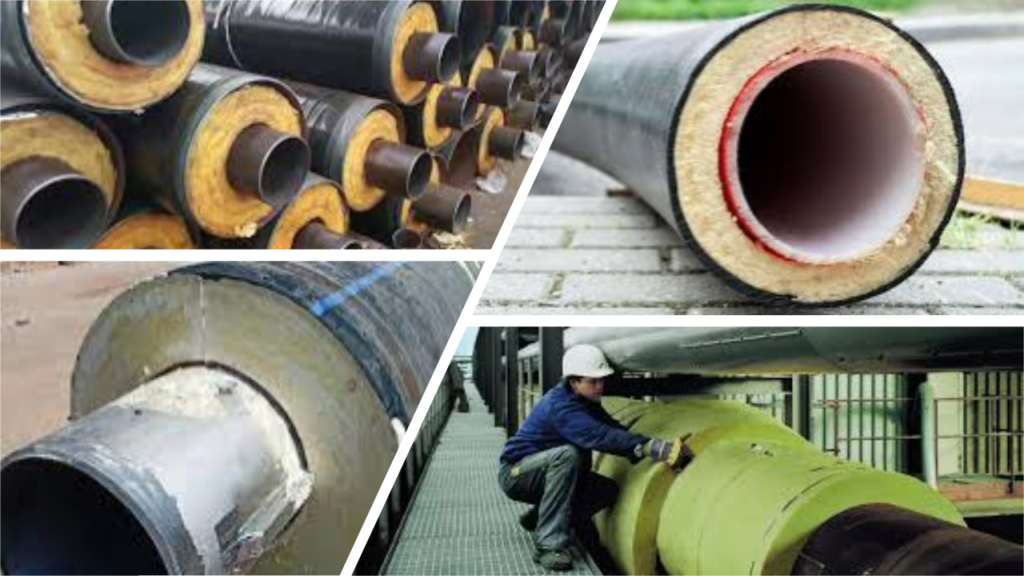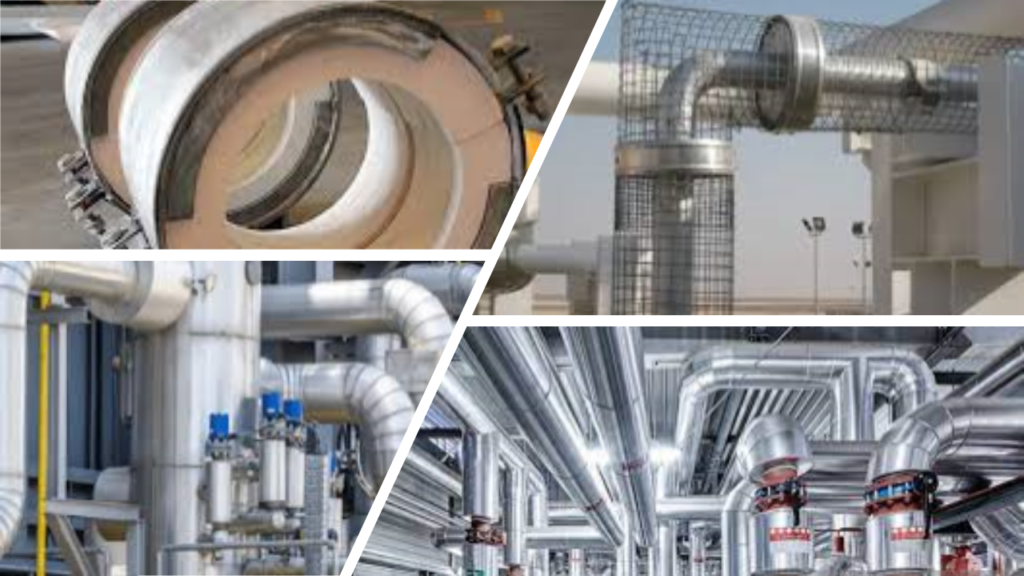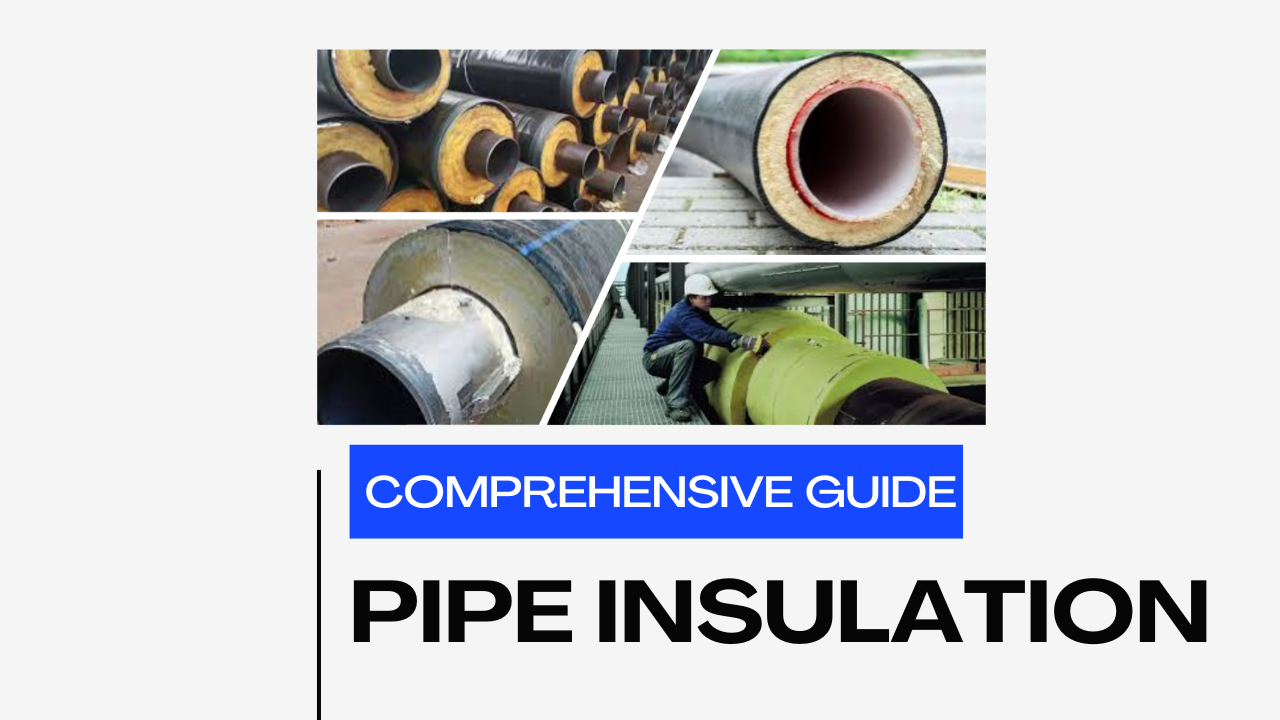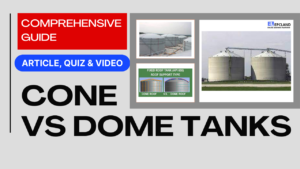Introduction
Pipe insulation plays a pivotal role in various industries by contributing to energy conservation, temperature control, and condensation prevention. The selection of appropriate pipe insulation materials is crucial to ensure optimal performance and efficiency. This article aims to provide a comprehensive overview of different pipe insulation materials, their characteristics, benefits, and applications.
Table of Contents
Don’t miss the Detailed course on 7 Modules for Piping Codes & Standards
Enrollment Link
Understanding Pipe Insulation
Pipe insulation refers to the practice of surrounding pipes with materials designed to reduce heat transfer, maintain desired temperatures, and prevent condensation buildup. The choice of insulation materials depends on factors such as the operating temperature, environmental conditions, and specific requirements of the application.

Similar Articles related to Pipe
| Topic | Weblink | Topic | Weblink |
|---|---|---|---|
| Pipe Insulation Materials | Link | ASME B36.10 | Link |
| Piping Codes & Standards | Link | Non-Metallic Pipes | Link |
| Pressure-Temperature Ratings | Link | Pipe Standards & Specifications | Link |
| Pipes for Different Fluids | Link | Pipe Coatings & Linings | Link |
| Pipe Materials Selection Guidelines | Link | Corrosion & Pipe Protection | Link |
| High-Temperature Pipes | Link | Pipe Dimensions & Sizes | Link |
| Pipe Manufacturing Processes | Link | Types of Pipes in Piping Systems | Link |
| Pipe Thickness Calculations | Link | Pipe Inspection & Testing | Link |
Common Pipe Insulation Materials
Fiberglass Insulation
Fiberglass insulation is one of the most commonly used materials for pipe insulation. Its versatility lies in its excellent thermal and acoustic insulation properties. Fiberglass insulation is available in various forms, including pre-formed sections and flexible rolls. It finds applications in residential, commercial, and industrial settings, providing effective insulation for pipes carrying fluids of different temperatures. However, it may not be suitable for high-temperature environments due to its limited heat resistance.
Mineral Wool Insulation
Mineral wool, which includes both rock wool and slag wool, is renowned for its exceptional heat-resistant properties. These materials are manufactured by melting and spinning natural rock or industrial byproducts. Mineral wool insulation offers superb fire resistance, making it a popular choice for applications involving high temperatures or fire risk. Its robust nature and durability make it suitable for industrial processes and heating systems.
Polyurethane Foam Insulation
Polyurethane foam insulation stands out for its impressive thermal insulation capabilities. This material can be applied as spray foam or rigid foam boards, allowing for precise fitting and reducing thermal bridging. Polyurethane foam insulation is commonly used in both commercial and residential settings, providing excellent energy efficiency benefits. Its high R-value (thermal resistance) makes it suitable for applications where space is limited.
| Insulation Material | Thermal Conductivity | Temperature Range | Moisture Resistance | Mechanical Strength | Applications |
|---|---|---|---|---|---|
| Fiberglass Insulation | Moderate | Low to Moderate | Fair | Low | Residential, Commercial, Industrial |
| Mineral Wool Insulation | Moderate | Low to High | Good | Moderate | High-Temperature Applications, Fire-Resistant Environments |
| Polyurethane Foam Insulation | Low | Low to High | Excellent | Moderate | Commercial, Residential, Energy-Efficient Buildings |
| Calcium Silicate Insulation | Low | High | Excellent | High | Petrochemical, Power Generation, Refining |
| Ceramic Fiber Insulation | Very Low | Extremely High | Good | Low | Furnaces, Kilns, High-Temperature Industrial Equipment |
| Polyisocyanurate (PIR) Insulation | Very Low | Cryogenic to Low | Good | Moderate | Refrigeration, Cold Storage, Cryogenic Facilities |
| Phenolic Foam Insulation | Low | Low to Moderate | Excellent | Moderate | Chilled Water Piping, HVAC Systems, Cold Environments |
High-Temperature Pipe Insulation Materials
Calcium Silicate Insulation
Calcium silicate insulation is well-suited for high-temperature applications. It exhibits low thermal conductivity and excellent moisture resistance. This insulation material is commonly used in industries such as petrochemical, power generation, and refining, where pipes and equipment operate at elevated temperatures. Its ability to withstand extreme heat makes it an essential choice for maintaining process efficiency and personnel safety.
Ceramic Fiber Insulation
Ceramic fiber insulation is a staple in industries requiring extreme heat resistance, such as metallurgy, ceramics, and glass manufacturing. It is available in various forms, including blankets, boards, and modules. Ceramic fiber insulation offers outstanding thermal stability and low thermal conductivity. Its lightweight nature and easy installation make it ideal for lining high-temperature equipment like furnaces and kilns.
Don’t miss the Detailed course on 7 Modules for Piping Codes & Standards
Enrollment Link
Low-Temperature and Cryogenic Pipe Insulation Materials
Polyisocyanurate (PIR) Insulation
Polyisocyanurate (PIR) insulation is designed to withstand extremely low temperatures, making it suitable for cryogenic applications. PIR insulation’s cellular structure minimizes heat transfer, maintaining the desired temperature of the fluid within the pipe. This insulation material finds its use in refrigeration systems, liquefied natural gas (LNG) facilities, and cold storage warehouses, ensuring efficient energy use and preventing frost formation.
Phenolic Foam Insulation
Phenolic foam insulation is valued for its remarkable combination of low thermal conductivity, moisture resistance, and fire resistance. This makes it an ideal choice for low-temperature applications, including chilled water piping and HVAC systems. Phenolic foam insulation helps maintain the desired temperature of chilled fluids, contributing to energy efficiency and occupant comfort.

Environmental Considerations
Sustainable Insulation Options
As environmental awareness grows, the demand for sustainable insulation materials has risen. Materials like recycled denim, natural wool, and cellulose insulation offer eco-friendly alternatives to traditional insulation options. These materials utilize recycled or renewable resources, reducing their environmental impact while providing effective insulation properties.
Energy Efficiency and Green Building
Proper pipe insulation significantly contributes to energy conservation in buildings. Well-insulated pipes help minimize heat loss or gain, reducing the energy required to maintain desired temperatures. This aligns with the goals of green building certifications such as LEED (Leadership in Energy and Environmental Design) and BREEAM (Building Research Establishment Environmental Assessment Method), which emphasize sustainable practices and energy efficiency.
Factors Influencing Material Selection
Temperature Range
The operating temperature of the pipes is a crucial factor when selecting insulation materials. Different materials have varying temperature limits. For instance, fiberglass insulation may not be suitable for extremely high temperatures, while calcium silicate and ceramic fiber excel in such conditions. It’s essential to match the insulation material to the intended temperature range to ensure optimal performance and longevity.
Moisture Resistance
Preventing moisture infiltration is critical to maintaining the effectiveness of insulation materials. Materials like polyurethane foam, which has inherent moisture resistance, are suitable for applications where pipes are exposed to damp environments. Moisture infiltration can degrade insulation performance and promote mold growth, so selecting materials with appropriate moisture resistance is essential.
Mechanical Strength
The mechanical properties of insulation materials play a significant role in applications where pipes are subjected to external forces or vibrations. In cases where pipes are located in high-traffic areas or industrial settings, materials with enhanced mechanical strength and durability are preferred. Reinforcements and protective coverings can be added to insulation systems to enhance their resistance to physical stress.
Don’t miss the Detailed course on 7 Modules for Piping Codes & Standards
Enrollment Link
Installation Methods
Proper installation is crucial for achieving the desired insulation performance. Pre-formed insulation sections offer ease of installation and consistent coverage, while on-site fabrication allows for custom fitting to irregular pipe shapes. Following recommended installation practices, such as proper sealing of joints and avoiding air gaps, ensures that the insulation functions as intended.
Maintenance and Longevity
The longevity of insulation materials depends on various factors, including the material’s durability, exposure to external conditions, and maintenance practices. Regular inspections are vital to identify issues like moisture accumulation, damage, or degradation. Maintenance efforts, such as repairing damaged insulation promptly, contribute to the longevity of the insulation system and its continued energy-saving benefits.
Conclusion
In conclusion, pipe insulation materials play a pivotal role in maintaining energy efficiency, temperature control, and condensation prevention across various industries. The diversity of insulation materials available allows for tailored solutions to meet specific application requirements. Whether it’s fiberglass insulation for residential settings, calcium silicate for high-temperature environments, or phenolic foam for low-temperature applications, the choice of insulation material should be based on factors such as temperature range, moisture resistance, and mechanical strength. By selecting the right insulation material and following proper installation and maintenance practices, industries can maximize efficiency, minimize energy consumption, and contribute to sustainable practices.
FAQs
- What is the purpose of pipe insulation?Pipe insulation serves multiple purposes, including reducing heat transfer, maintaining desired temperatures for process efficiency, preventing condensation and moisture buildup, and minimizing energy loss. It is crucial for conserving energy, improving system performance, and ensuring safety in various industries.
- How do I choose the right pipe insulation material for my application?Choosing the right insulation material depends on factors such as the operating temperature, environmental conditions, moisture exposure, and mechanical stress. Different materials have varying thermal conductivity and resistance to these factors. It’s important to consult with experts and consider factors like temperature range, moisture resistance, and mechanical strength to make an informed decision.
- What are the benefits of using high-temperature insulation materials like calcium silicate and ceramic fiber?High-temperature insulation materials like calcium silicate and ceramic fiber are designed to withstand extreme heat. They provide excellent thermal resistance, low thermal conductivity, and mechanical stability at elevated temperatures. These materials are ideal for industries involving furnaces, kilns, and high-temperature equipment, where maintaining process efficiency and personnel safety is critical.
- Are there eco-friendly options for pipe insulation?Yes, there are sustainable and eco-friendly options for pipe insulation. Materials like recycled denim, natural wool, and cellulose insulation utilize recycled or renewable resources, reducing environmental impact. These alternatives offer effective insulation properties while contributing to a more sustainable approach to insulation.
- How important is proper installation and maintenance of pipe insulation?Proper installation is crucial for achieving the desired insulation performance. Inadequate installation, such as leaving gaps or not sealing joints, can compromise insulation effectiveness. Regular maintenance is also essential to ensure insulation longevity and optimal performance. Inspections should identify issues like moisture accumulation, damage, or wear and tear, and necessary repairs should be carried out promptly.
Recommended courses (Published on EPCLand)
- Basics of Piping Engineering
- Piping Layout Engineering
- Piping Material Engineering
- Piping Stress Analysis
- Complete Course on Piping Engineering
- Material Requisitions
- Piping Material Specifications
- Valve Material Specifications
Don’t miss the published articles on following:
Related Video
Attempt Quiz
Question 1:
Which of the following is a commonly used pipe insulation material with excellent thermal resistance?
Explanation: Fiberglass is a commonly used pipe insulation material that offers excellent thermal resistance and is effective in preventing heat transfer.
Question 2:
Which type of pipe insulation material is known for its flexibility and moisture resistance?
Explanation: Polyurethane foam is known for its flexibility and moisture resistance, making it a suitable choice for pipe insulation in various applications.
Question 3:
Which pipe insulation material is commonly used for its fire-resistant properties?
Explanation: Rock wool is a pipe insulation material known for its fire-resistant properties, making it suitable for applications where fire safety is a concern.
Question 4:
Which pipe insulation material is effective in preventing condensation and providing thermal insulation?
Explanation: Polyethylene foam is effective in preventing condensation and providing thermal insulation, making it a common choice for pipe insulation in HVAC systems.
Question 5:
Which pipe insulation material is often used for its energy-efficient and eco-friendly properties?
Explanation: Cellulose insulation is often chosen for its energy-efficient and eco-friendly properties. It is made from recycled materials and provides good thermal performance.



